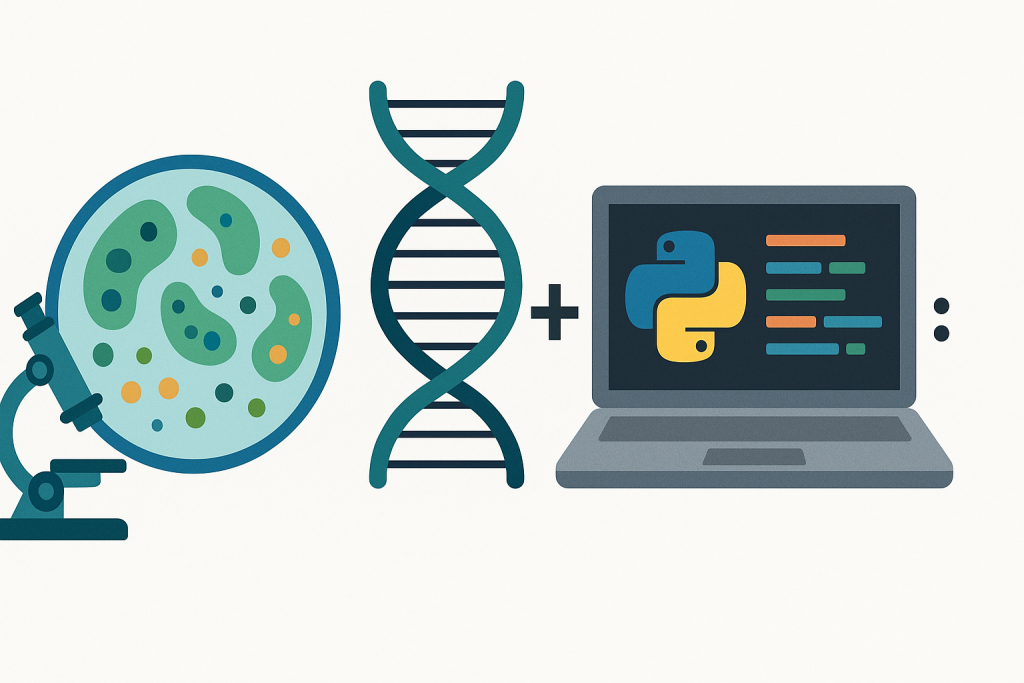The future of learning is hybrid — and it’s happening at the intersection of biology and code.
Why the Divide Between Wet Labs and Code Labs Is Disappearing
For generations, science and computing were treated as separate domains.
Students who loved experiments went to the lab bench; those who loved logic went to the keyboard. But modern science no longer sees this as a useful divide. Biology has become data-rich — genomics, microbiome studies, and cellular modeling all depend on computational analysis. Meanwhile, computer science increasingly draws inspiration from living systems — neural networks, genetic algorithms, and bio-inspired computation.
In today’s classrooms, this convergence means one thing: students need bio-literacy (the ability to understand living systems) and code literacy (the ability to design and simulate those systems) as parts of a unified STEM skillset.
From Observation to Simulation: A New Scientific Process
Traditional science education focuses on physical observation — the Petri dish, the microscope, the test tube.
But the next generation of science learning extends this with digital experimentation. Students can now simulate biological processes using Python notebooks or AI-driven lab software, testing thousands of “what if” scenarios before ever touching a pipette.
For example:
- A student might use Python to model bacterial growth under different conditions before testing it in class.
- Another might train a simple machine learning model to predict enzyme behavior or genetic variation outcomes.
This pairing of hands-on and simulated experimentation deepens understanding. It’s no longer just about memorizing biological facts — it’s about designing and modeling life as a system.
Bioinformatics as the Bridge
The clearest example of this merger is bioinformatics — where biological data meets computational thinking.
Students today can access open genomic datasets, use visualization libraries like matplotlib or seaborn to map patterns, and understand evolution, disease, and biodiversity through data analysis.
Learning to code in this context isn’t just a technical skill; it’s a form of scientific thinking at scale. Code becomes a new kind of lab instrument — one that manipulates not matter, but information.
Curriculum Implications: Building Hybrid Fluency
Educators are beginning to design integrated STEM frameworks where biology and computing reinforce each other:
- Middle School: Introduce digital models of ecosystems or population growth using simple block-based programming.
- High School: Combine genetic experiments with Python data visualization to analyze real DNA sequences.
- College and Beyond: Encourage interdisciplinary projects — from coding cell simulations to designing bio-inspired robotics.
The outcome is a generation of students fluent in both the language of life and the syntax of code — capable of navigating biological complexity through computational precision.
Preparing for the Bio-Digital Economy
The merging of bio-literacy and code literacy is not just educational — it’s economic.
Fields like synthetic biology, personalized medicine, and environmental modeling are already redefining industries. Employers are looking for talent that can think across systems — people who can design a lab experiment one day and write a data pipeline the next.
By merging Petri dishes and Python scripts in classrooms today, we prepare students for the bio-digital economy of tomorrow.
The Takeaway
The 21st-century scientist isn’t just wearing a lab coat — they’re also writing code.
When classrooms reflect this reality, they don’t just teach science or technology; they teach how to think across boundaries — an essential skill for the future.
Bio-literacy and code literacy are not two languages — they are dialects of the same future.


